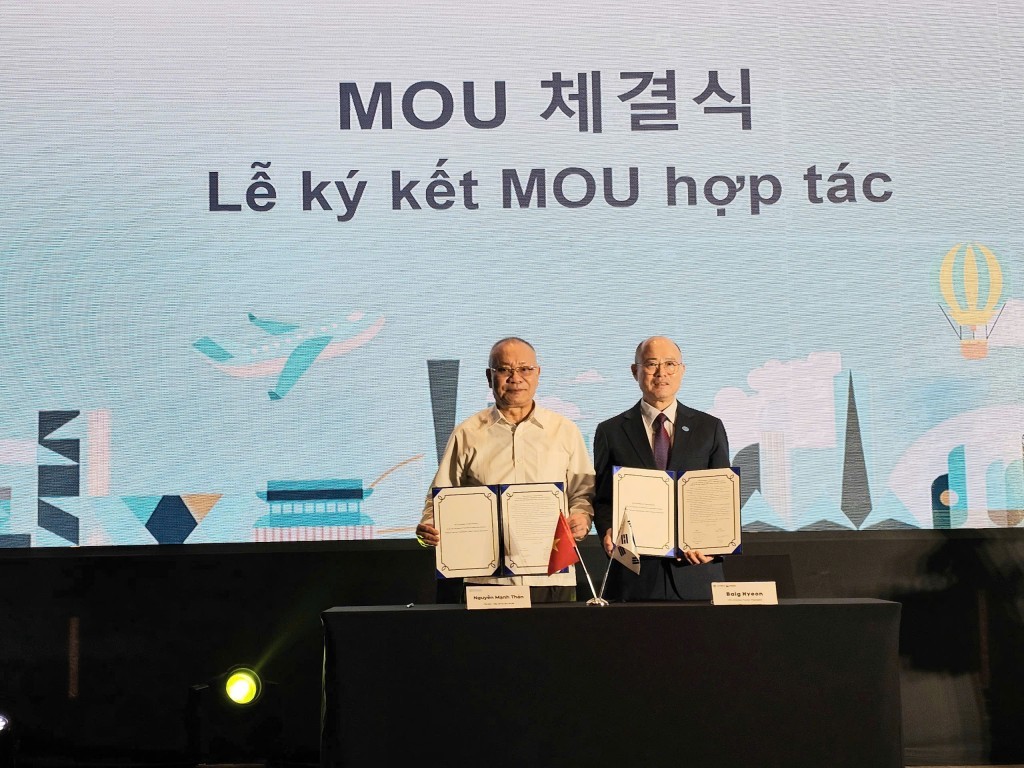Hoi An recognised as Vietnam’s new food capital
Hoi An has recently been recognised as Vietnam’s new food capital by the World Association of Chef Societies. The ancient town, already best known for peaceful streets and mossy houses, is now a culinary destination of Vietnam.
 |
Locals and visitors to Hoi An join a long queue in front of the Phuong bakery to buy a loaf of bread. (Photo: Internet)
Locals and visitors to Hoi An are willing to join a long queue in front of the Phuong bakery to buy a loaf of bread. Phuong’s bread has been named the best bread in the world by chef Anthony Bourdain, who ate with U.S. President Barack Obama in a Bun Cha (Pork pie noodle) small restaurant in Hanoi in May 2016.
Tran Thi Thu Trang, a customer at Phuong bakery said, "I have visited Hoi An several times. I like the local cuisines like Quang noodle, and Cao Lau, but I like bread in Phuong bakery the best. Its taste and flavor are special. The bakery is always crowded. Sometimes it takes me half an hour to get a loaf of bread.”
Cao Lau noodle, chicken rice, fried hen, and corn sweet soup are also popular food in Hoi An. The perse local cuisines attract visitors and also globally-recognised chefs. That might be the reason for Hoi An to host the annual International Food Festival.
Thomas Gugler, President of the World Association of Chef Societies said more work needs to be done. "I think the nature in Hoi An is fantastic. This helps Hoi An to be recognised internationally and well-known. The infrastructure in public areas should be more shaped up, more clean, and higher standard of food safety. The food here is fantastic", Thomas Gugler noted.
Trinh Diem Vy, Director of the Hoi An Food Event Company, learned to cook local traditional dishes when she was young. She has opened a number of restaurants to introduce Hoi An food. In 1996, she was the first person in Hoi An to open a Vietnamese food cooking class which drew many foreigners. During her work, Vy has met many foreign chefs, gained experience from them, and introduced them to Hoi An cuisine.
Vy said, “Hoi An food is easy to be accepted by foreigners. Hoi An has pure local food and fusion food thanks to its exchanges with foreigners, its people, climate and location.”
 |
Aunt Bay’s Banh Beo (water fern cake) on Hoang Van Thu Street. (Source: willflyforfood.net)
‘DEVELOP CUISINE INTO A SPECIAL TOURISM PRODUCT’
Hoi An was a famous commercial port in the 17th and 18th centuries. Trade exchanges have enriched local culture and the culinary in particular.
Nguyen Van Son, Vice Chairman of the Hoi An Municipal People’s Committee, outlines a plan to develop cuisine into a special tourism product.
“Hoi An will focus on ensuring the quality of ingredients, which must be clean, fresh and have clear origins. We are preparing to establish the Hoi An Chefs’ Association and connect it with fishermen and farmers in order to reduce intermediary costs, helping farmers to sell their products directly to processors”, said Son.
The city also plans to upgrade its infrastructure and train its chefs in a professional manner as an effort to ensure Hoi An food tourism remains attraction.
A new night market has been opened near Hoi An market and will operate daily from 6 pm to 11 pm with 56 pavilions. The new Hoi An night market was opened on March 8th on the streets of Tran Quy Cap, Bach Dang, Tieu La and Hoang Van Thu to facilitate local people’s commercial activities in the east of the old quarter.
The market will have 56 pavilions stretching 120m along Tran Quy Cap Street, with 43m on Bach Dang and another 10m on Hoang Van Thu Street. There are plans for an additional 40 stands to be installed along 130m of Tieu La Road in the future.
Hoi An now has three night markets, with the new addition and the two old markets of Nguyen Hoang, which sells souvenirs, and Con Nu Ngoc Hoa, which specialises in cuisine.
In 2017, Hoi An city welcomed more than 3.2 million tourists visited, a pickup of 21 per cent against the year earlier. The 3.22 million visitors included 1.78 million foreigners and 1.44 million domestic visitors, according to the Quang Nam Department of Culture, Sports and Tourism.
Hoi An was recognised as a World Heritage Site by UNESCO in 1999 and since then has made its mark as the culinary destination of Vietnam.
The town is often cited in international readers polls, magazines, and travel pages as one of 10 best places to eat in the world. Hoi An’s traditional foods rank 6th on TripAdvisor and, according to Lonely Planet, Hoi An’s market is known as the “food capital of Vietnam” amongst both domestic and foreign tourists./.
VNF
Most read
Recommended
 Travel
Travel
Hanoi and Incheon to Promote Tourism Products
 Travel
Travel
Vietnam - Unique Destination Allures Indian Tourists
 Travel
Travel
Vietnam Welcomes 40% More International Tourists in 10 First Months of 2024
 Travel
Travel
Foreign Tourists Converge at Hanoi’s Temple of Literature for Cultural and Historical Immersion
Popular article
 Travel
Travel
6,000 International Tourists Visit Vietnam by Sea
 Travel
Travel
Phu Quoc Ranks Second Among Top 10 Best Islands In Asia
 Travel
Travel
Vietnam Among Top Countries Favored By Tourists
 Travel
Travel







